Why Is It Harder To Cycle Uphill? 13 Tips For Easier Climb

Climbing a hill can be a daunting feat, whether you’re walking or on your bike.
But why is it that cycling uphill seems even harder?
Many factors come into play when tackling a steep incline and understanding what they are can make all the difference in your success.
From common rider mistakes to helpful tips from experts, this article will help you get to the top of that hill with ease!
5 Common Mistakes That Make Cycling Uphill Harder
Riding up a hill on a bike can be challenging, especially for beginner cyclists.
Unfortunately, many riders make common mistakes that only make the experience harder.
1. Wrong Gear
It may seem like a no-brainer, but using the wrong gear when starting up a hill can be detrimental.
Using too high of a gear will cause you to spin out quickly and using too low of a gear will make it hard for you to maintain enough speed.

Additionally, using a high gear too often can put a lot of strain on your muscles and tendons, so you may be at risk for injury.
The key is to find the lowest gear you can handle without spinning out too quickly.
2. Excess Weight
Carrying extra weight on your bike or on your body makes it much more difficult to climb hills.
If possible, try to lighten your load by removing any unnecessary items from your bike or backpack and if necessary, consider investing in lighter components or materials.
3. Pedal Stroke
A poor pedal stroke technique can also make it harder for you to climb hills efficiently.
Make sure that you’re pushing down and pulling up with each revolution of the pedals in order to get the most power out of each stroke and minimize fatigue as much as possible.
4. Not Choosing The Right Bike
Depending on how steep or long the hill is, having the right type of bike can make all the difference in how difficult it is for you to climb it efficiently.
Road bikes are usually easier to ride for moderate grade and have a paved surface compared to mountain, gravel, hybrid, and beach cruiser bikes, thanks to their lightweight frame.
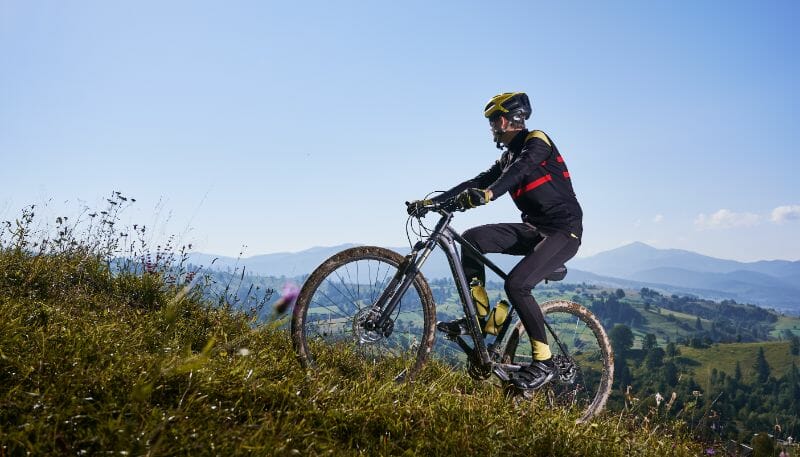
On the other hand, a full-suspension mountain bike may be able to easily climb a much steeper slope compared to a road bike.
5. Poor Climbing Techniques
Many cyclists don’t realize just how important technique is when climbing hills.
Proper shifting techniques, cadence management, and proper body positioning are all essential.
One common mistake is to always stand when pedaling uphill.
This provides a little bit more power for the short term but causes you to lose momentum and makes cycling more difficult than necessary in the long run.
Also, riders often forget to adjust their body position properly.
Leaning forward over the handlebars helps distribute weight evenly and improves stability while riding uphill which will help conserve energy.
13 Pro Tips For Biking Uphill Without Getting Tired
Cycling uphill can be a daunting task, but it’s possible to make the climb easier and less tiring.
Here are 13 pro tips for cycling uphill without getting exhausted.
1. Reduce Your Weight
The heavier your bike and your body, the harder it will be to propel yourself and your bike forward against gravity.
That’s why having a lightweight bike makes such a big difference when tackling steep hills.
When choosing a bike for hill climbing, look out for features like lighter frames or tires that can help reduce overall weight.
Also, as the heavier you are, the harder every climb will be.

I’ve definitely felt this in my own experience – even small hill climbs can feel impossible when you’re carrying extra pounds.
The best way to make these climbs easier is to focus on incorporating some weight loss into your training plan.
2. Regular Training
Training regularly is the key to success when it comes to cycling uphill.
When you’re tackling a steep hill, your muscles need extra endurance and strength – something that can only be achieved through regular practice.
If you want to track your climbing performance with data, the VAM score is an invaluable tool for you.
Fortunately, there are several drills and exercises cyclists can do to improve their performance on hills.
Weekly hill training sessions are an excellent way to prepare for challenging climbs.
These workouts involve gradually increasing the difficulty of each climb until you reach the toughest grade you can handle with ease.
Another effective technique for improving muscle endurance for climbing is interval training.

This involves alternating between short bursts of high-intensity exercise and periods of rest or low-intensity activity.
Interval training boosts aerobic capacity, which in turn increases power output over an extended period of time – perfect for climbing those tough hills!
As well as building physical strength, this type of training improves concentration and focus, so you’ll be better equipped mentally to tackle any kind of hill on your next ride.
3. Start Easy
Always start with small hills or inclines.
You don’t have to jump into the steepest hill in town.
Begin by slowly climbing a smaller grade until you become comfortable with the motion of cycling uphill.
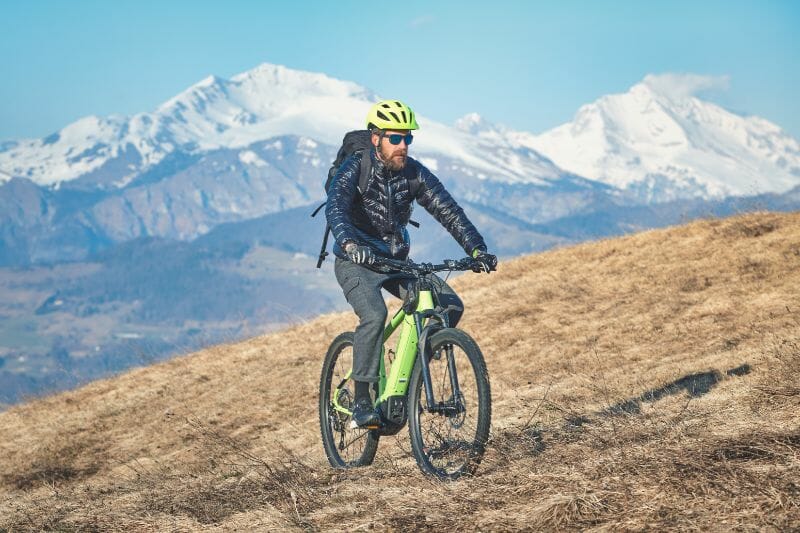
This will help build your muscles and give you confidence before tackling those steeper grades.
Next, get familiar with gearing systems on bikes so that you can shift properly while transitioning from one incline level to another.
Having the right gear ratio makes it much easier to cycle uphill since you won’t need to work as hard against gravity.
4. Get Your Gears Right
Here are three tips that will help you get the most out of your gear shifting:
- Learn when to shift – Knowing when to select a higher or lower gear is key in making climbing hills easier. Selecting gear shifts at the right times will allow you to maintain an even cadence throughout the entire ride.
- Practice on smaller hills first – Before tackling larger hills, practice shifting down on small inclines so that you become familiar with the feeling of using different gears.
- Anticipate what lies ahead – Look ahead and plan ahead by anticipating upcoming changes in terrain and selecting appropriate gear accordingly.
5. Shift Timing
One of the most important techniques for tackling an incline is to shift into a lower gear early on.
This allows you to apply more power, while also keeping your cadence steady and avoiding excessive strain on your legs.
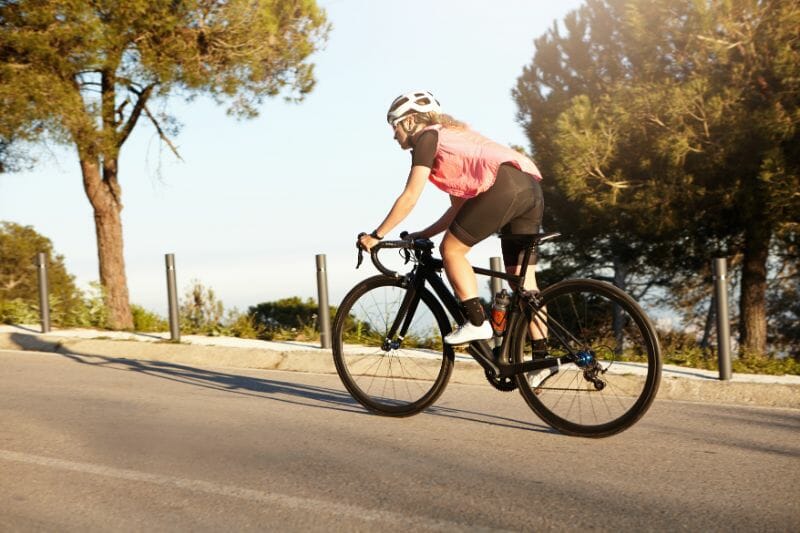
When it comes to shifting gears, timing is critical – if you wait too long before downshifting, then you’ll find yourself struggling up the hill with no extra power left in the tank.
If you’re planning on standing up while climbing, make sure to shift down one or two gears right before starting the ascent.
This will be beneficial as you make the climb since it will provide extra power and leverage while pedaling in this new gear.
It’s important to not wait too long before shifting though, because by then there may be too much tension on your chain to successfully adjust gears.
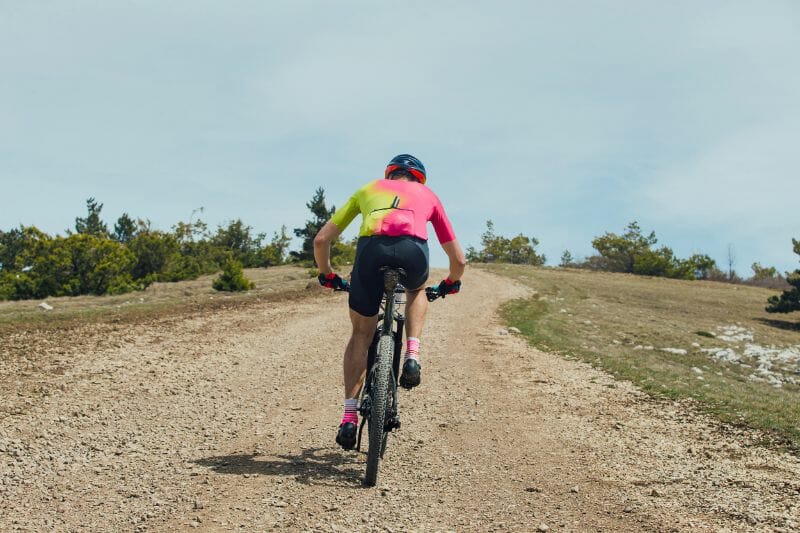
Not being able to get into the desired gear would lead to your bike not shifting or worse yet dropping your chain altogether.
Shifting early saves you from all sorts of potential problems, so don’t be afraid to adjust sooner rather than later!
6. Pacing The Climb
Cycling uphill is a challenge that requires more than just shifting early and correctly.
To make the most of your efforts, it’s important to understand the hill-climbing strategy known as pacing.
Pacing involves controlling your speed and adjusting your effort so you can climb efficiently while still improving endurance.

When tackling an incline, start with a steady pace that will allow you to maintain control of your bike and keep your heart rate at an even level for as long as possible.
This way, you’ll be able to maximize the amount of work done during each pedal stroke without quickly exhausting yourself or burning out before reaching the top.
As you progress up the hill, gradually adjust your speed by downshifting gears to increase torque and reduce stress on your legs.
If the gradient allows for it, try standing in order to shift some weight onto your arms and take pressure off of your lower body muscles.
The goal should be to find a balance between pushing hard enough to make progress but not too hard so that you wear yourself out prematurely.

The best hill climbing strategy involves maintaining momentum throughout the ascent instead of having short bursts followed by rest periods when fatigue sets in.
Short breaks are necessary now and then if needed, but they shouldn’t become regular habits on longer climbs since this will ultimately slow down overall progress.
7. Fuel And Refuel For Power Booster
Cycling up a hill is an intense workout, and it requires more energy than cycling on flat terrain.
To make sure you have enough fuel for your ride, there are some important considerations to keep in mind when preparing for a challenging climb.
Eating the right foods before and during your ride can give you the extra boost of energy that’s needed to tackle hills with confidence.
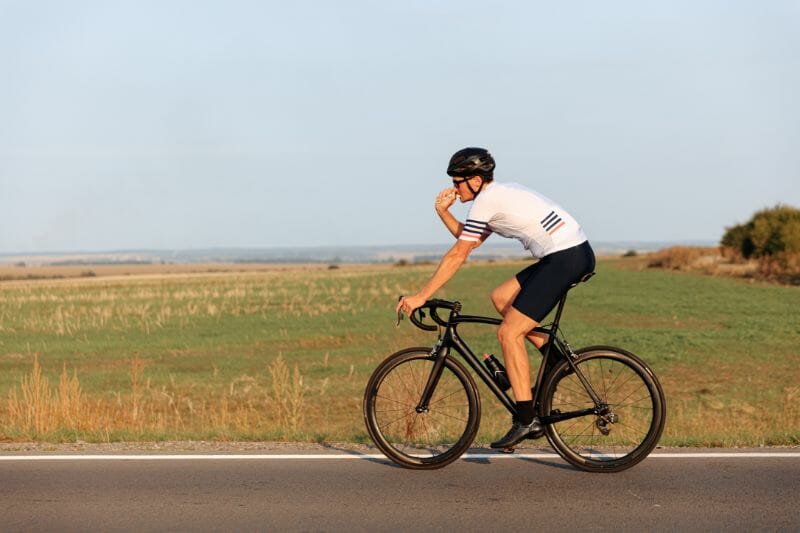
Complex carbohydrates like whole grains and nuts are good sources of slow-burning calories that will sustain you throughout your ride.
It’s also helpful to bring along bike energy snacks like granola bars or bananas that are easy to eat while riding so you don’t lose momentum going uphill.
The key is not only eating the right types of food but also timing them correctly.
Start fueling up at least two hours before your ride by having a balanced meal containing lean proteins, complex carbs, healthy fats, and fiber.
While out on the road, remember to drink plenty of fluids and snack every 45 minutes or so – especially if you’re tackling a big hill!
This way you’ll ensure that your body has all the energy it needs to take on any obstacles ahead without feeling tired or sluggish.
8. Improve Cycling Technique
Cycling uphill isn’t just about having strong legs – it’s also about using specific pedaling techniques and body positions that maximize efficiency while minimizing fatigue. (1, 2)
When climbing, your goal should be to maintain as steady of a cadence as possible.
This helps keep your effort level consistent throughout the climb instead of burning you out before you reach the top.
To achieve this, use short and powerful strokes when pedaling.
Also, make sure you are keeping your upper body relaxed by maintaining a low position on the bike frame relative to the ground.
This will help reduce drag so you can conserve energy for later in the ride.

Lastly, don’t forget to stay focused on your breathing.
Deep inhalations and exhalations will not only improve oxygen intake into your lungs but also help keep mental clarity during long or strenuous climbs.
This way, you won’t get lost in fatigue and succumb to giving up halfway through the hill!
With practice and dedication, these tips will soon become second nature – leading to smoother rides both up and down any hill.
9. Relax And Breathe
Taking deep breaths while cycling helps to keep your body oxygenated, reducing the feeling of exhaustion as well as providing an extra boost of energy when powering up hills.
To further help manage the challenge of going uphill on your bike, there are several breathing techniques that you can use to focus and stay relaxed so that you can enjoy the ride.
The first step is to practice breathing exercises at home or in other low-stress situations before attempting them during rides.
Start by focusing on your breath and taking slow, long inhales through your nose followed by a slower exhale out of your mouth.

Notice how this simple exercise calms you down and prepares you for any physical activity ahead.
You can also combine mindful breathing with visualization, picturing yourself calmly riding up the hill while maintaining steady breaths throughout each turn.
This will allow you to build trust in yourself that no matter how steep the climb may get, you have control over your breath and ultimately the outcome of your ride.
10. Ride With Your Friends
Riding in a group is a great way to make cycling uphill easier.
Not only can you benefit from the camaraderie of fellow riders, but you can also take advantage of the draft created by other cyclists.
Drafting behind another rider can reduce your overall effort and make climbing hills much more manageable.
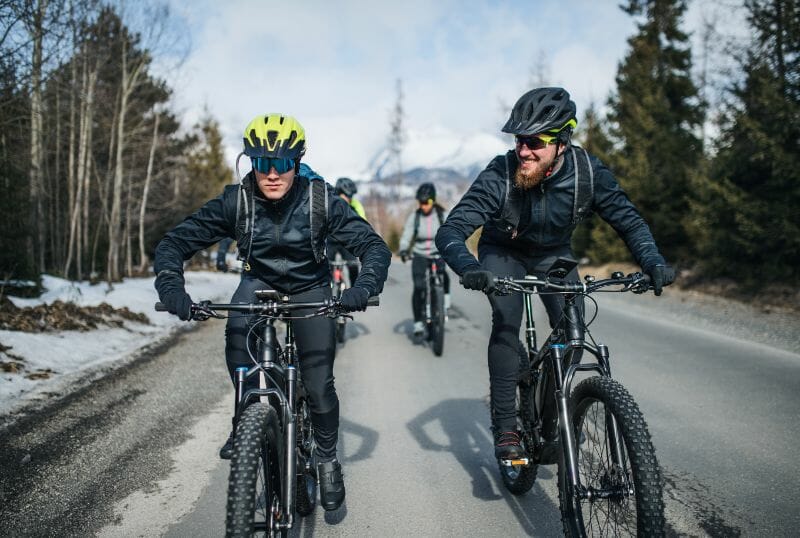
Additionally, riding in a group gives you an opportunity to practice different cycling techniques with experienced riders who know what works best for various inclines and gradients.
This can help improve your overall confidence on the bike and give you an edge when tackling even the steepest climbs.
Finally, riding as part of a group is just plain fun!
11. Practice Hill Repeats
Mastery requires repetition.
That’s why practice hill repeats are so important for improving your climbing performance.
Hill repeats involve repeatedly riding up and down a short, steep incline at an intensity that challenges you but doesn’t exhaust you completely.
This gives you the opportunity to improve your ability to climb hills while still being able to ride further afterward.
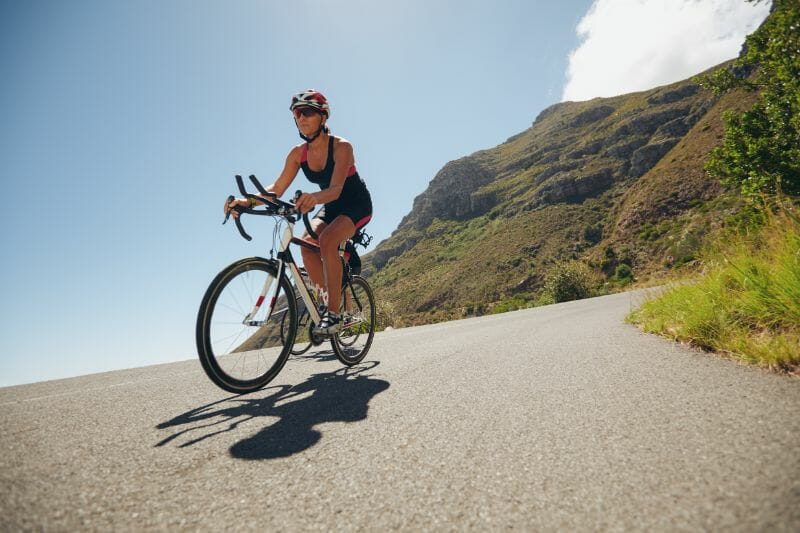
With regular practice, you can increase your power output when climbing, meaning you can reach the top of each hill faster and with less effort.
It’s also beneficial to break down complex climbs into smaller sections in order to build strength and gain confidence one section at a time.
Through consistent practice sessions incorporating various intensities, you can become better prepared for any type of ascent!
12. Push Your Bike
Sometimes we just don’t have the energy left to keep cycling uphill. And that’s okay.
Get off your bike and push it up an incline for however long it takes.
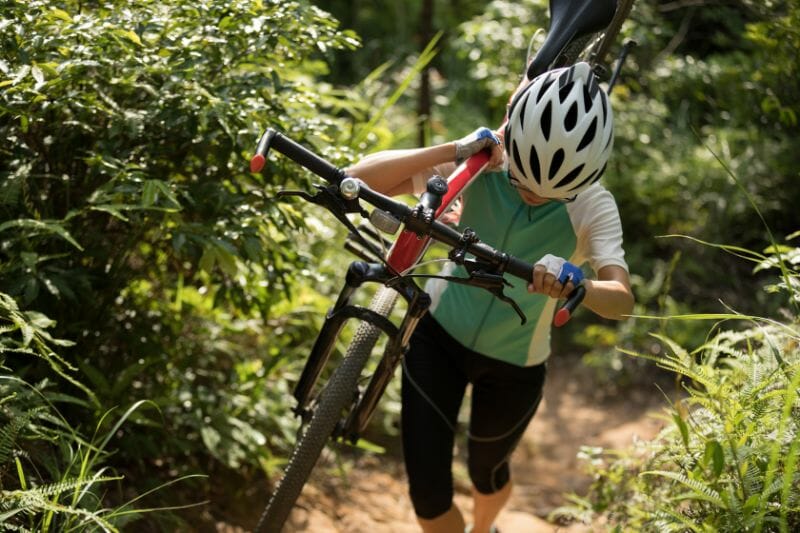
It’s still a great way to still get some exercise without having to ride as much of the uphill portion.
This allows you to save energy for other parts of the outing.
Though it might not feel like the most rewarding form of biking, never give up!
If a climb is harder than anticipated, take some moments to rest, stretch out any muscle knots, and keep in mind how far you did get.
13. Positive Self-Talk
When the going gets tough, it can be easy to give up and focus on the negativity.
It’s important to take a step back and remember that we are capable of more than we think.
One way to do that is by thinking uplifting thoughts and doing positive self-talk.
This can look different person-to-person.
Some people might like to recall motivating speeches from famous athletes, entrepreneurs, etc.
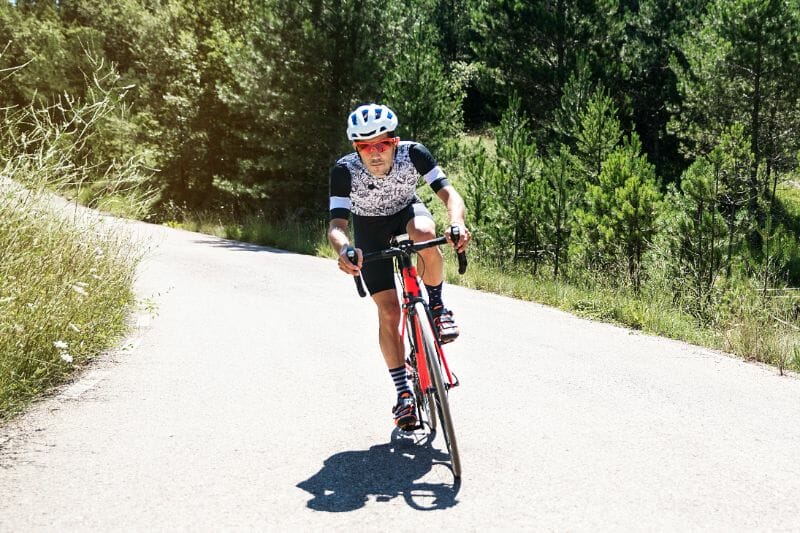
Regardless of how you choose to picture it, envisioning yourself being light and strong helps to remind you what you’re capable of and erase any doubts that may plague you during your journey.
Motivation can also come from remembering all those who have inspired us and believed in us along the way.
Thinking about friends, family members and colleagues who have encouraged us can inject enough positivity into even the toughest hill climb!
Final Thoughts
With practice and dedication, anyone can become an expert in conquering hills.
Taking time to learn proper techniques will give you more control over your ride and allow you to tackle steep inclines with ease.
Don’t forget to properly fuel with nutritious food and take breaks when needed.
Pushing yourself too hard can lead to injury or fatigue later down the line.
Embrace every challenging ride as part of your journey toward becoming a better cyclist – soon enough you’ll find yourself cruising up those hills like a pro!





